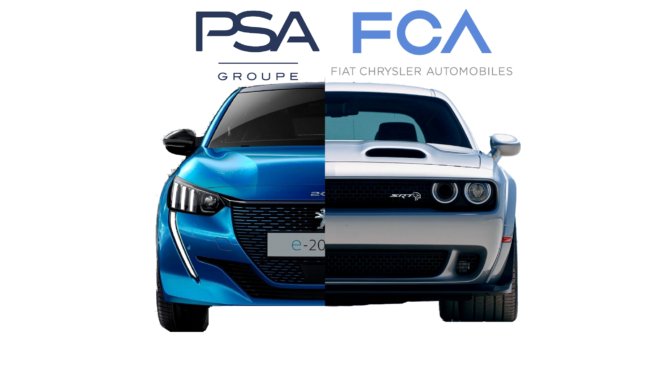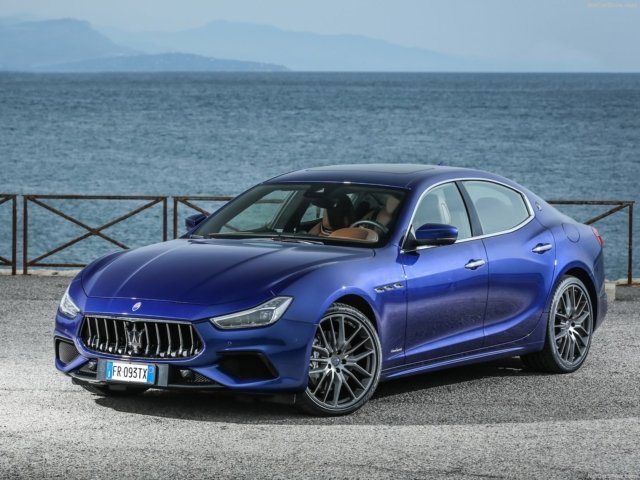
Yesterday morning’s announcements made in Auburn Hills, Paris and Milan, revealed a formal merger of PSA Groupe (formerly Peugeot Société Anonyme) and FCA (Fiat Chrysler Automobiles) in a deal valued at $50 billion.
In 1979, when Chrysler was facing bankruptcy here at home, it sold off its European operations to Peugeot. Now, 40 years later, Chrysler’s successor FCA and Peugeot successor, PSA are set to merge that makes the combined entity to be the world’s fourth largest automotive/mobility company in the world behind Volkswagen, Toyota, and the Renault-Nissan-Mitsubishi alliance.
The combined company’s family of brands will include Alfa Romeo, Chrysler, Dodge, Fiat, Jeep, Maserati, and Ram from FCA and Citroen, DS, Opel, Peugeot, and Vauxhall from PSA. Together in 2018 their combined sales totaled $180 billion, selling almost nine million vehicles worldwide.

What does it mean for Mopar fans? It is the culmination of the late FCA CEO Sergio Marchionne desire to see FCA tie-up with another automaker to share the costs of electrification and a move to autonomous vehicles to ensure its long-term survival.
The strength of the merger is that there is little overlap in the footprint between the two companies (less than the aborted FCA/Renault-Nissan merger just five months ago), even in Europe where Fiat is a strong participant only in its home market of Italy. PSA has a highly competitive line of small cars whose platforms can serve as a springboard to reviving Fiat’s aging line of passenger cars and its premium DS brand would make a logical platform to revive Chrysler passenger car lineup here in North America.

In North America it gives PSA an immediate entry to the US market, a move previously signaled by PSA having already set up US operations in Atlanta, Georgia, with a previously targeted relaunch for 2023. FCA brings to the altar Ram (now the second best-selling line of light-duty pickups in North America) and Jeep, the crown jewel of the FCA portfolio of brands.
The downside, as most analysts point out, is that the merger does not immediately address both companies’ weakness in China, the world’s largest car market. Both companies are marginal players in a Chinese market that is slowing down. I see this as being the merger’s greatest area of opportunity if they can strengthen their combined position there, possibly with stronger Chinese partners. Jeep, FCA’s best-selling brand in China, will be the key to making this happen.

On the product side, short-term, very little will change as new platforms take three years or more to develop, costing two to five billion dollars, the prime motivation for this merger. Getting a long-term platform strategy, especially for electric vehicles and powertrains, is what will power this merger, something that never really happened with the ill-fated DaimlerChrysler “merger of equals.”
This will be easier for FCA and PSA than it was for Daimler and Chrysler. On the car side, FCA has a premium, rear-wheel-drive platform used by Alfa Romeo to share with PSA. Conversely, if the market takes a turn back to cars, especially small cars, Peugeot has a very competitive lineup and some of its crossovers especially well regarded (and would be the vehicles used to relaunch Peugeot here which left the US market in 1991).

And here’s something to consider, Carlos Tavares, who will likely be the CEO of the combined entity has a sterling track record as a turnaround artist, much like the late Marchionne. Need proof? In 2017, he took Opel and Vauxhall off of GM’s at a fire sale price after more than a decade of losses. In just 18 months, he returned the former GM brands to profitability.
FCA’s CEO, Mike Manley is expected to be named COO of the combined company. Together Tavares and Manley form the best one-two management punch in the automotive industry. With a combined volume of almost nine million vehicles, the company will have the industrial heft to compete with Volkswagen, Toyota, and Renault-Nissan-Mitsubishi alliance while leapfrogging over its domestic competitors GM (who is taking a $3 billion hit to its bottom line due to its recently concluded strike) and Ford (which is beset with problems related to recent and upcoming vehicle launches).









First I want to thank my friend Kevin Shaw for giving me this platform among die-hard Mopar enthusiasts to offer and share my analysis of the importance of game-changing FCA-PSA merger. I recognize that this is not the usual car- or tech-related feature you expect to find here on Mopar Connection Magazine.
But like all of you, I am a traditional Mopar enthusiast myself, having written hundreds of Mopar-related features for dozens of magazines and websites over the past 20 years. In fact, I was attending the Mopar Fall Fling last Saturday in California at the very time that senior executives from FCA and PSA were hammering out the final details of this merger.
I think it is an important story as it helps to understand that it goes a long way to ensure the long-term survival of both storied companies whose predecessor companies stretch back to the beginning of the last century. It positions both to move forward in a changing automotive environment where electrification and autonomy will mean more than the tire-shredding horsepower under the hood of a 2020 Dodge Challenger Hellcat Widebody.
The merger offers both companies opportunities, mostly to share the costs of developing increasingly expensive platforms (from two to five billion dollars each) as well as the costs to electrify their vehicles and compete in the autonomous vehicle sector. And I see this as an opportunity especially for the Chrysler brand here in the US, to refresh its lineup with cars based on PSA’s premium DS brand. And as Peugeot has just introduced the battery-electric e-208, a car with an electric range of 210 miles, that when badged as a Chrysler in 18-24 months, will make it instantly competitive in a market segment that is essential to for any company to be able to sell any cars here in California, ICE or electric.
So that’s the importance of this story and I hope you will enjoy reading it to get a new perspective on the FCA-PSA merger. My next story for MCM will be on all the classic Mopars I saw last week at Fall Fling. While I love writing about vintage Mopars, as a writer and journalist (thanks Kevin for the kind words in my bio here) I need to be able to be equally versed in writing about the next generation of Mighty Mopars.
Richard Truesdell
I agree this is very important to any Mopar Man so thanks to you for writing this timely article.
My concern is FCA picking up more junk brands. By that I mean they are so poorly designed that they are not reliable. My Dad was a Ford man, but after blowing up 3 different Fords in a row he relented to his 13 year old Dodge Boy son and that is all we drive even decades later.
Thanks to you pointing out Carlos Tavares’ ability so there is hope.
On the bright side, if Carlos Tavares can turn around Maserati, I will have a vehicle to buy in the future since it seems clear Dodge will not be building the Barracuda.